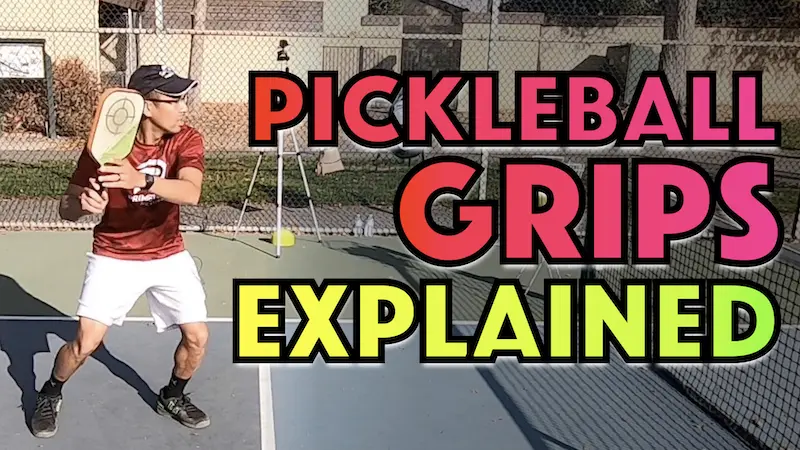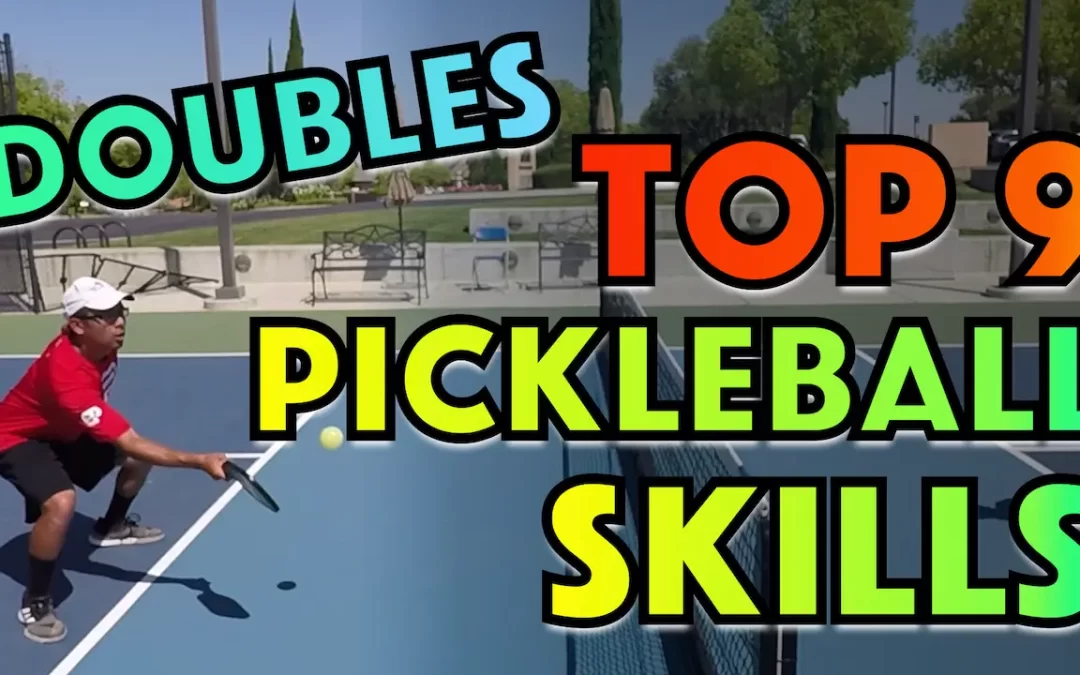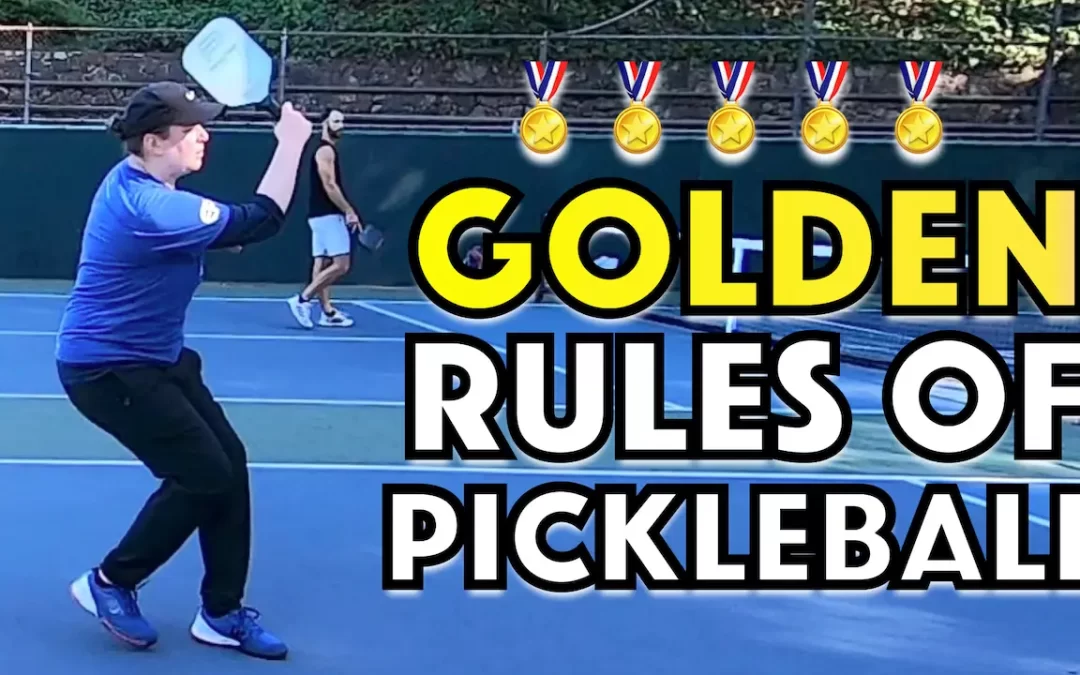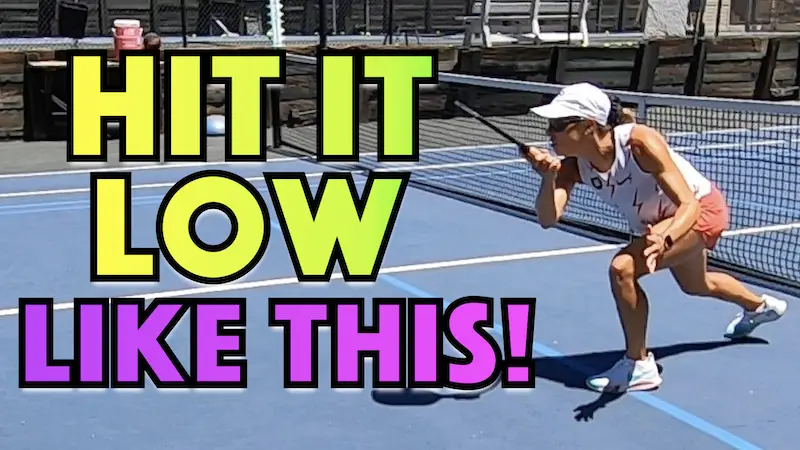A dink shot is a soft shot hit on a bounce or out of the air (dink volley) from the NVZ. The intention is to have this shot land in the opposing teams NVZ, or near it, and ideally forces your opponents into a low contact.
The NVZ stands for “non-volley zone,” and it is the area that runs from the NVZ line to the net and measures 7 feet deep and 40 feet across. A term also commonly used for this area is the Kitchen.
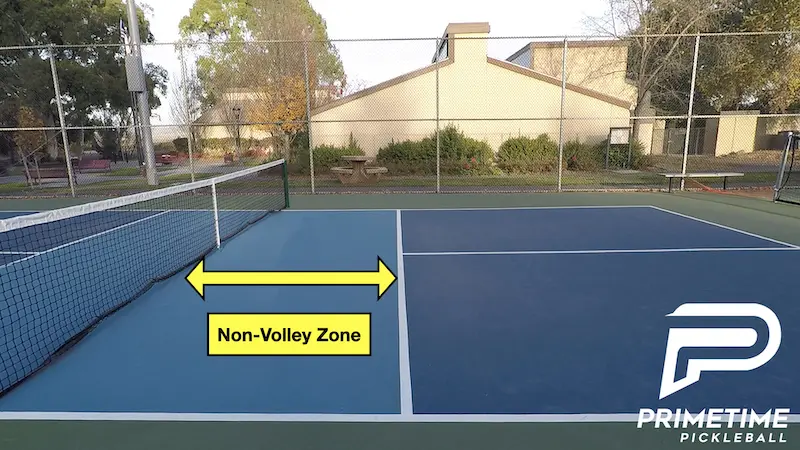
Dink shots are soft. The goal is to also keep them low after the bounce in order to force a low contact. The strategy of forcing your opponents into a low contact is one of the best for preventing them attacking you. This is the main purpose of hitting a dink.
And all the while keeping that purpose in mind, you can also push your opponent around with your dinks causing them to have stretching contacts, jammed contacts, etc., forcing your opponents to be off-balance and uncomfortable which increases the chances of defensive mistakes.
When used effectively, dink shots can be an excellent way to win points in pickleball.
Why do you dink in pickleball? What is the purpose of a dink shot?
Traditionally, the dink has been thought of as only a defensive or neutralizing shot with the mindset that you dink, dink, dink and wait patiently for your opportunity to attack. That is not true and has never really been true.
Yes, the dink can and should be used in those ways but it is also used offensively to set up an attack.
In an offensive situation you want to put pressure on the opposing team and force them to pop-up the ball so it sits nice and high for you to easily put away.
Or, if you’re in a defensive position, where your opponents are drilling hard shots at you, then you can use the dink as a neutralizing shot to help regain control in the dink battle.
When executed correctly, dink shots can be an extremely effective weapon in pickleball. If you’re looking to improve your game, learning how to hit a successful dink shot is a great place to start.
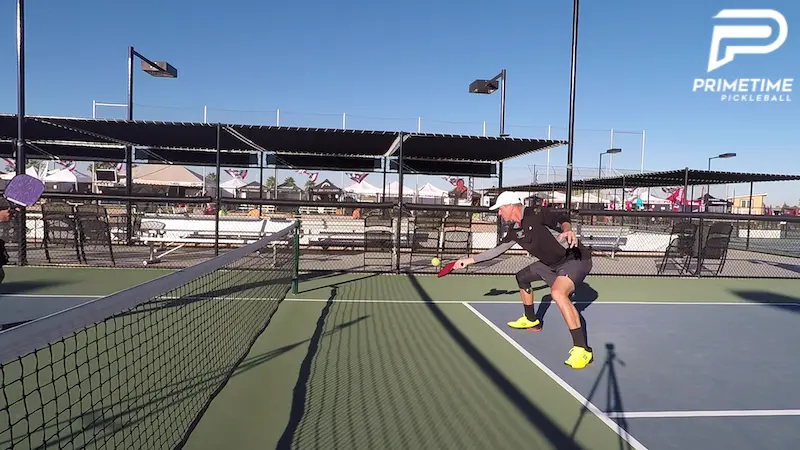
What is the first rule of dinking in pickleball?
The primary objective is to force your opponents into low contact points. However, this is not a stand alone objective, it goes hand in hand with the objective of putting pressure on your opponents.
All of these can be accomplished on the majority of your dinks.
However, on certain dinks where you are very pressed, your main goal is to not be attacked on the next shot. On others, where you are not pressed at all, you can employ more of an aggressive dinking strategy.
You want to force your opponents into low contact and make it difficult for them to attack you while at the same time setting yourself up for an attack.
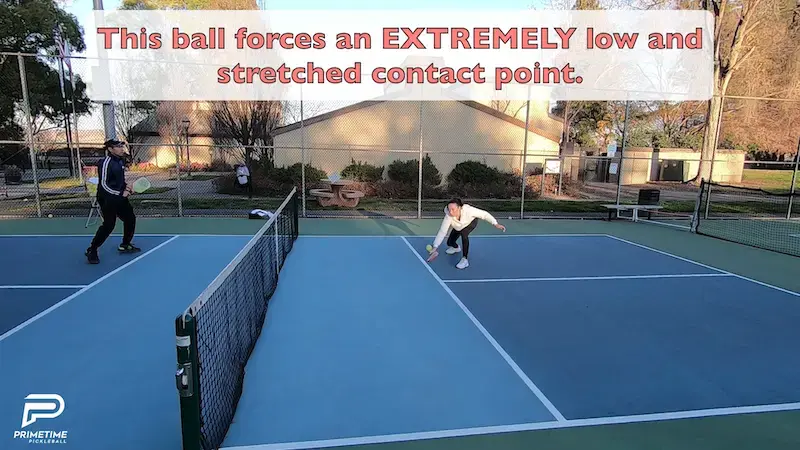
From dink to dink there will always be a balance to be struck between these two objectives.
Depending on how aggressive or defensive you are being on any particular dink, and how short or deep your target is in your opponents NVZ, there is an acceptable net clearance range within which your ball should travel.
For deeper and more aggressive dinks, your shot can pass generally closer to the net, approximately within a foot. When your dinks are softer and your target is shorter in the kitchen, your net clearance will be in the general vicinity of the higher end of that range.
What is the difference between a dink shot and a drop shot in pickleball?
A common mistake in pickleball is that people confuse the terms “drop” and “drop shot”. While both shots are soft, they serve different purposes. It’s important to know the difference so you can use each shot effectively in game situations.
A drop is hit off the bounce from near the baseline or in the transition zone (back half of the court) and is designed to help you make your way from the backcourt up to the NVZ line while the other team is already up at the NVZ line.
A drop shot, on the other hand, is when you have one team at the baseline and the other team at the NVZ line. The team that is already at the NVZ line decides to hit a drop shot into the kitchen, forcing the other team to have to make a quick sprint from the baseline to the NVZ in order to retrieve the shot. In many cases they are not able to get to it in which case it’s a winner. Should they reach the shot, they may be able to dink it back into the kitchen and reset the point.
When people ask this question they are generally wanting to know the difference between a dink and a drop.
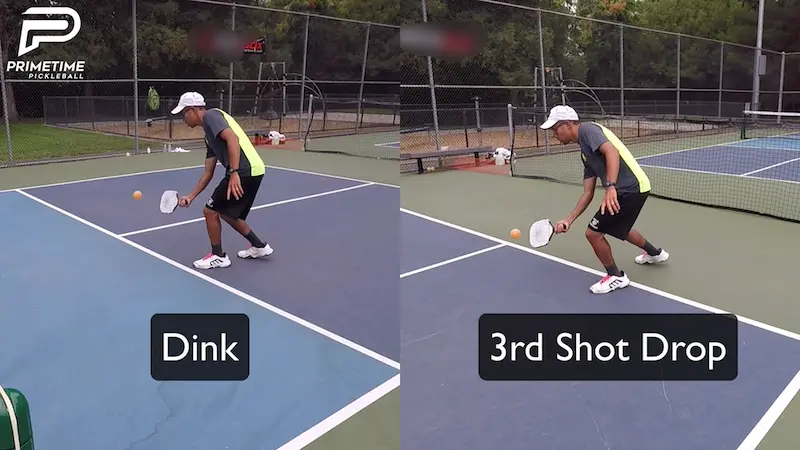
As explained above, both shots are soft shots. In the case of a drop, the primary objective is to advance to the net behind the shot without being attacked. A dink is used while at the kitchen in order to prevent being attacked while at the same time setting up an attacking opportunity for your team. Dinking occurs when both are already up at the NVZ.
Where should a dink shot be placed in pickleball?
A lot of times when people are dinking there is no purpose or no intention behind it. Players are out there just hitting regular, repetitive balls which are considered “dead balls” that have no purpose.
You need to get in the habit of changing that.
When you’re dinking you really want to move your opponents around to keep them guessing. You also want to keep the shots varied by perhaps hitting with some topspin or even a slice.
One other important thing to remember is your footwork. Keep those feet moving and even hit a small split step if there’s enough time.
There are 3 general lateral targets used ona dink.
1) Cross court
2) Middle
3) Down the line
On any of these lateral targets you can also vary between hitting them deeper in the kitchen or shorter.
Dinking will happen when all four players are in a dink battle up at the NVZ line. All players will be varying their targets between the options mentioned above with the intention to either jam up your opponents or stretch them out which should ideally result in a shot that was accidentally hit back a little higher than intended on which you can capitalize and initiate and attack.
7 Technical Tips To Hit A Successful Dink
1) The Dink Grip – Continental
The continental grip is the ideal grip for dinking because you can hit an effective dink with both your forehand and backhand while using this grip.
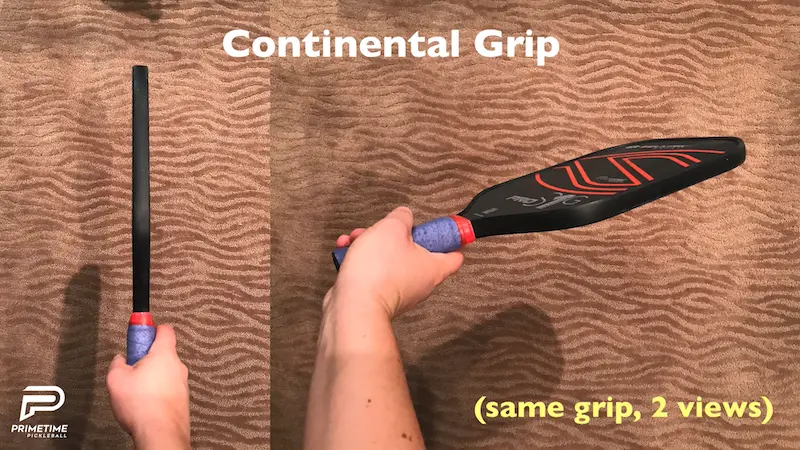
No other grip is as versatile.
It’s also very easy to add slice to your dinks with the continental grip which can help to keep the dink low after it bounces on your opponent’s side.
2) Bend Your Knees
It’s very important to use your legs when dinking. Too often we see players bending at the waist and back with straight and stiff legs.
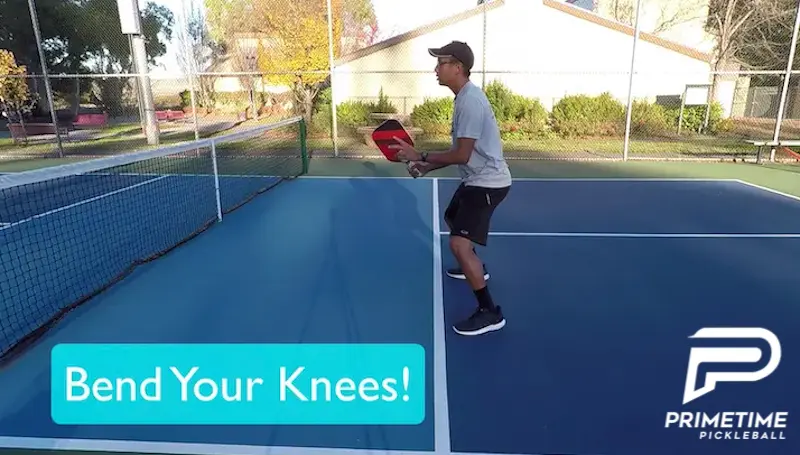
Not only is this hard on your back and may lead to injury over time but it also makes it very hard to move when the dink is hit away from you.
You’ll want to get low with bent knees and a straight back for those dinks and push from the legs. Don’t forget to also move your feet.
Use the energy from you legs and let that be what pushes your paddle forward and consequently the ball over the net.
If you use your legs, this will also help minimize the swing needed on the paddle and you will have far more control for the shot if the energy that propels the shot is coming from your legs.
3) Contact In Front
You can’t transfer energy onto something that’s behind you that you want to send forward. It just doesn’t work that way. Kinetically it’s not optimal.
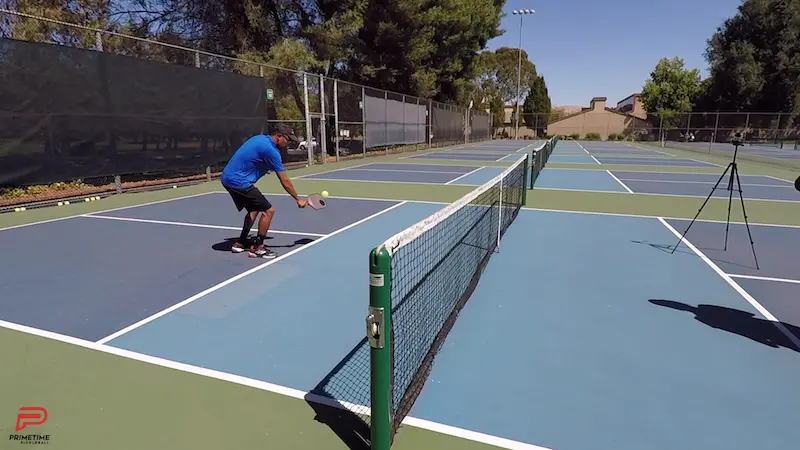
You want to contact the ball in a way that you are not stretching out to far out in front of you or get jammed up too close to you. Your ideal contact point should be about a foot or two out in front of you.
4) Dink Volley If You Can
If you are able to hit a dink volley rather than a dink off the bounce this may be a good idea. When you dink volley, you can often get a higher contact point than a dink after a bounce. Therefore, that extra height will give you a better chance at having a more straight trajectory to your target over the net which gives you the opportunity to hit it flatter.
In addition to that, dink volleys take time away from your opponents which is always a good thing because it reduces recovery time for your opponents, makes them have to think quicker and react faster.
5) No Backswing
When dinking you will want to have a low to high swing path.
The paddle should not come behind your body. This is where a lot of players get in trouble. They take their paddle too far back behind them which has them coming into contact with too much swing and therefore too much energy which is generally not helpful when you’re trying to hit a soft shot such as a dink.
A big back swing on a dink can also often contribute to a late contact.
Start the dink low and with a very short backswing and end with a short follow through. It’s more of a gentle push than a swing.
Too often we see far too big backswings and long follow throughs.
If you have too long of a follow through when that close to the net, not only is your dink likely to go too far but you also won’t be ready for the ball that is coming back because you are still following through when your paddle should already be in ready position awaiting the dink reply.
6) More Of A Push, Not A Swing
As mentioned earlier, when you are dinking you want to “push” the ball over rather than take a swing at the ball. A lot of people take too much of a swing when dinking which can lead the ball to sail out or sit too high leading to an attack by the opposing team.
7) Stable – Hit From Shoulder
When hitting a dink you want to use your whole arm and not just flick your wrist. You want to activate your shoulder and activate your entire arm for a soft and controlled shot.
If you start getting to “wristy” with your dinks you could end up sending the ball into the net or have it sail out.
Remember, use your legs when hitting dinks and minimize your upper body movement. The upper body movement should be limited to mostly the shoulder.
Final Thoughts
The dink is a very important shot in pickleball, as is the drop. As far as the mechanics of hitting the shot, they are quite similar. Because you are hitting the drop from deeper in the court than the dink, your motion will be a little bit more pronounced and the push from your legs will need to be a little stronger but fundamentally the technique is largely the same. It may be helpful for you to visualize that a drop is essentially a dink from the baseline.


